An Overview of the Carmenta Engine Custom Object Samples
Each custom object sample resides in its own zip archive.
Each sample is provided in both C#, C++ and Java. The implementation details are described in the sample source files.
To use the Carmenta Engine NuGet packages installed on Windows, when using WSL to build the .NET samples for Linux, you can set the ProgramFiles environment variable to point to the Windows path before running dotnet build.
export ProgramFiles="/mnt/c/Program Files"
The C++ CustomObject samples can also be built for Android by using CMake and used in a C++ application. To use it, the library and the .px-file can be included in the carmenta.engine directory when building the application.
For example, to build the CustomVisualizerCpp sample for Android and include it in the HelloWorldQtQuick sample, do the following:
Create a bin directory in the CustomVisualizerCpp sample directory after extracting the sample archive.
From the bin directory, run the following after replacing %ANDROID_NDK_ROOT% with the path to the Android NDK used for building:
cmake -G Ninja -DANDROID_ABI=arm64-v8a -DANDROID_PLATFORM=android-23 -DANDROID_STL=c++_shared -DCMAKE_TOOLCHAIN_FILE=%ANDROID_NDK_ROOT%/build/cmake/android.toolchain.cmake ..
cmake --build .
Before building the HelloWorldQtQuick sample for Android, add the .px-file from the CustomVisualizerCpp sample to the carmenta.engine directory. Also include the bin/libCustomVisualizerCpp.so library in carmenta.engine/bin/.
Change the code in the HelloWorldQtQuick sample, that loads the helloworld.px file, to load the .px-file from the CustomVisualizerCpp sample.
Build and run the modified HelloWorldQtQuick sample on an Android device.
To build for 64-bit x86, for example when running in an emulator, replace arm64-v8a with x86_64 when building with CMake.
Custom DataSet Sample
This sample provides two different custom datasets. The first contains point features that are read from a comma separated text file and the second is a custom raster dataset that loads a regular PNG image file and places it in a geographic rectangle.
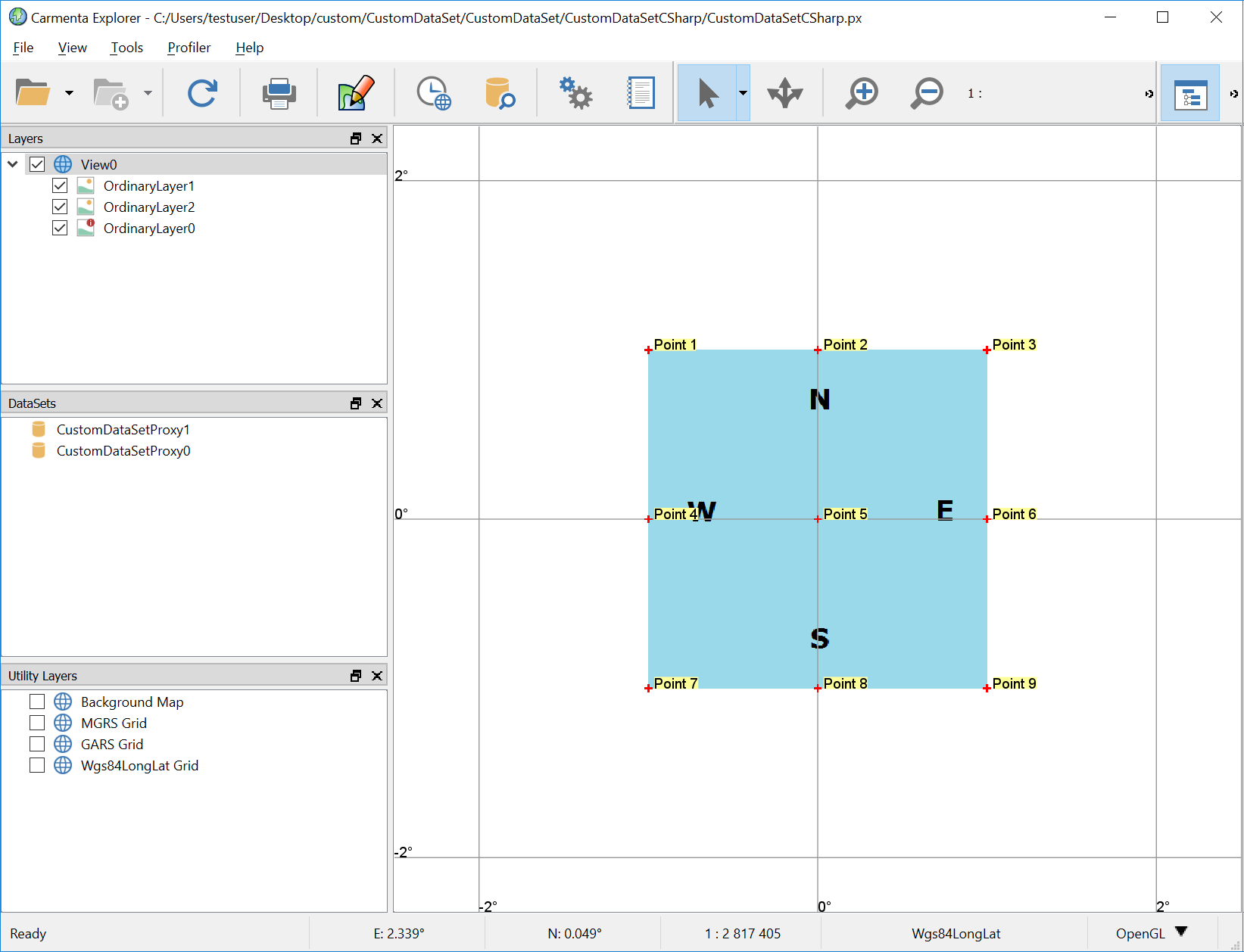 |
Custom Operator Sample
Simple custom operator that demonstrates how to use the CustomOperatorAdapter class to implement a custom operator that creates four copies of each feature, offset around the original, that is processed.
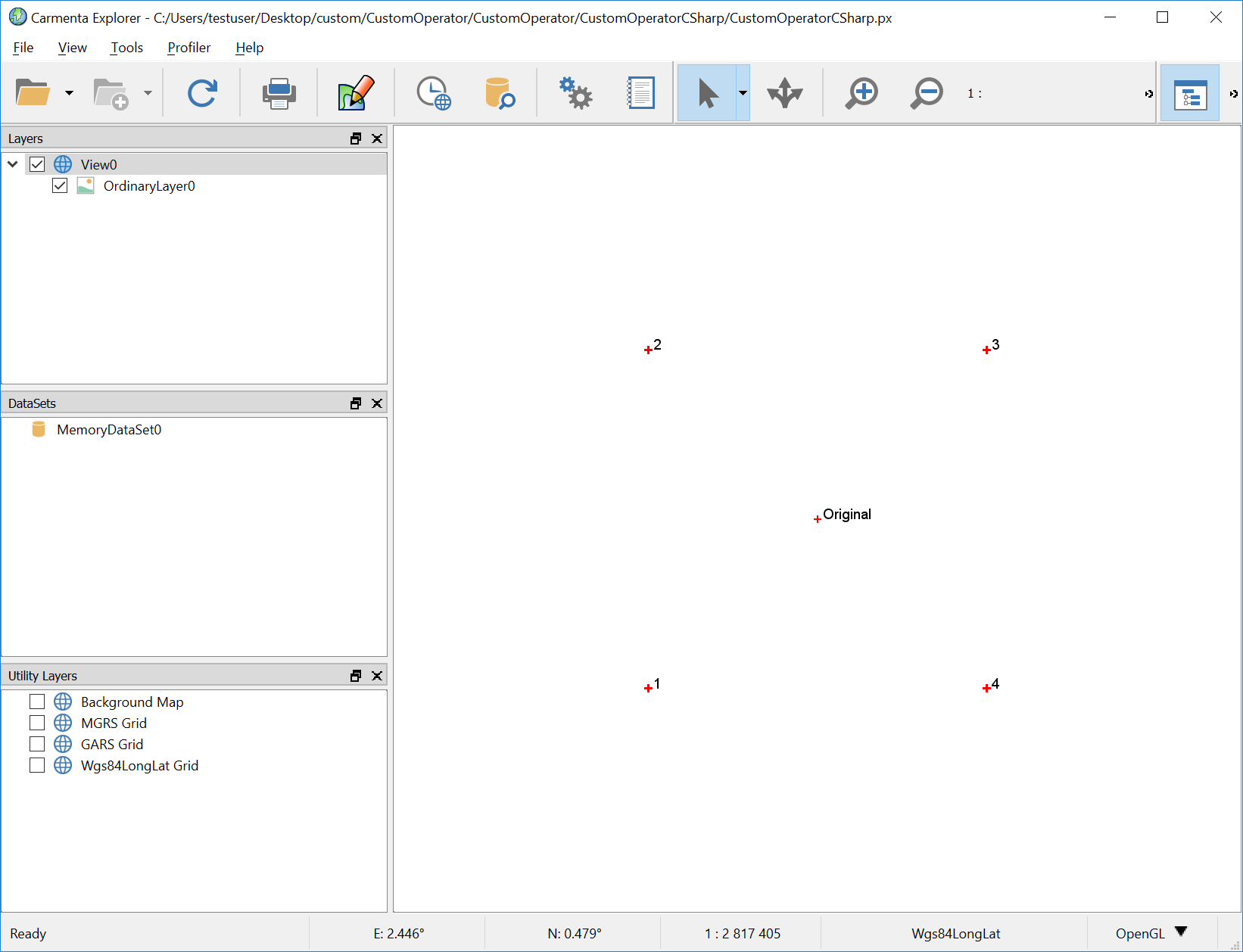 |
Custom Propagation Sample
A custom propagation replaces the standard line-of-sight propagation model of the LineOfSightOperator or its subclasses TargetLineOfSightOperator and AirspaceCoverageOperator, so you can implement your own propagation models for radio, sound, ballistic trajectories, etc.
The sample implements a non-standard propagation model for line of sight with semitransparent land cover. The probability of seeing a target through land cover is assumed to decrease exponentially with distance in a way that is quantified by the probability-halving distance.
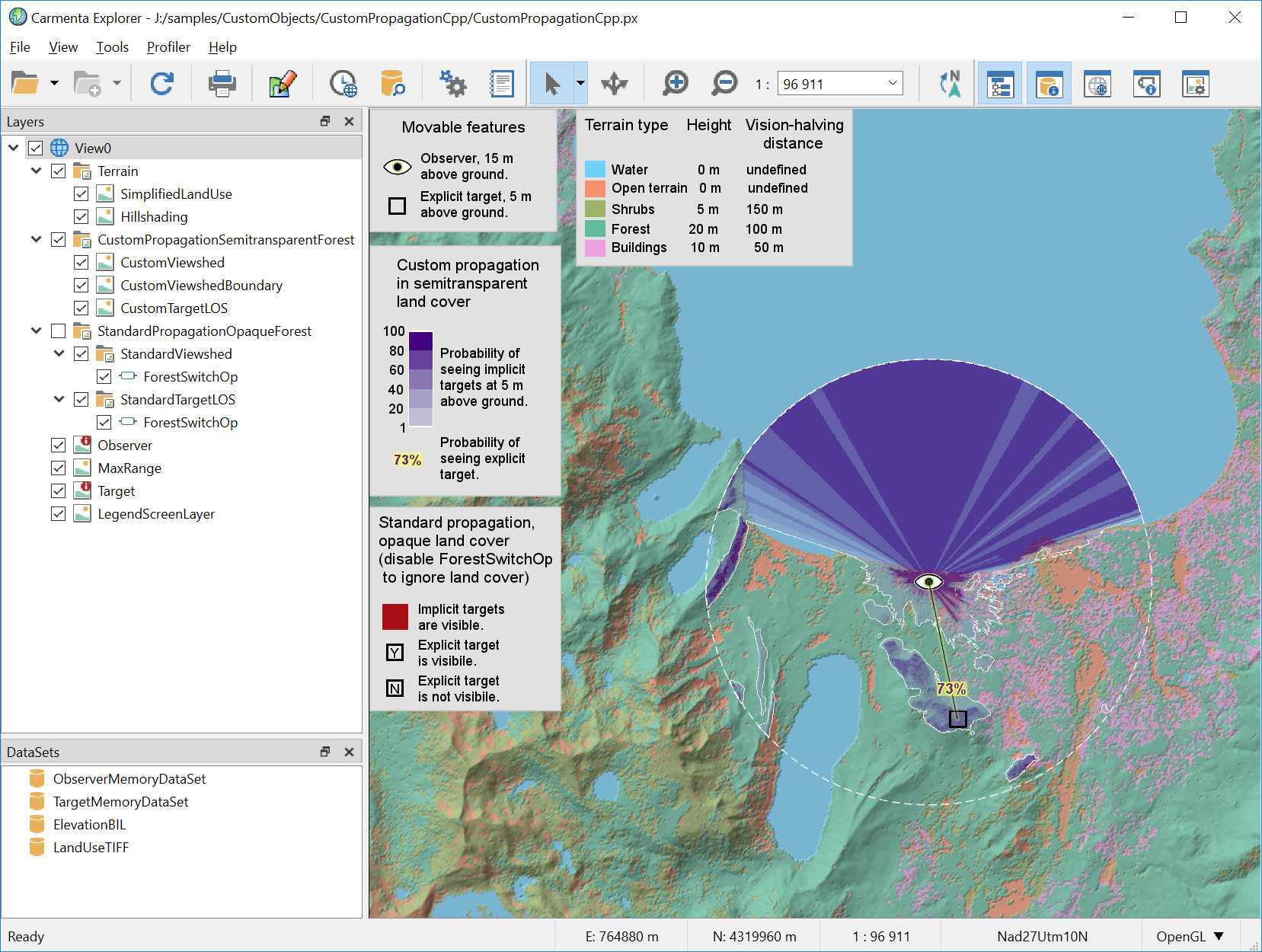 |
Custom Symbol Sample
Shows how to use a custom symbol to draw wind barbs.
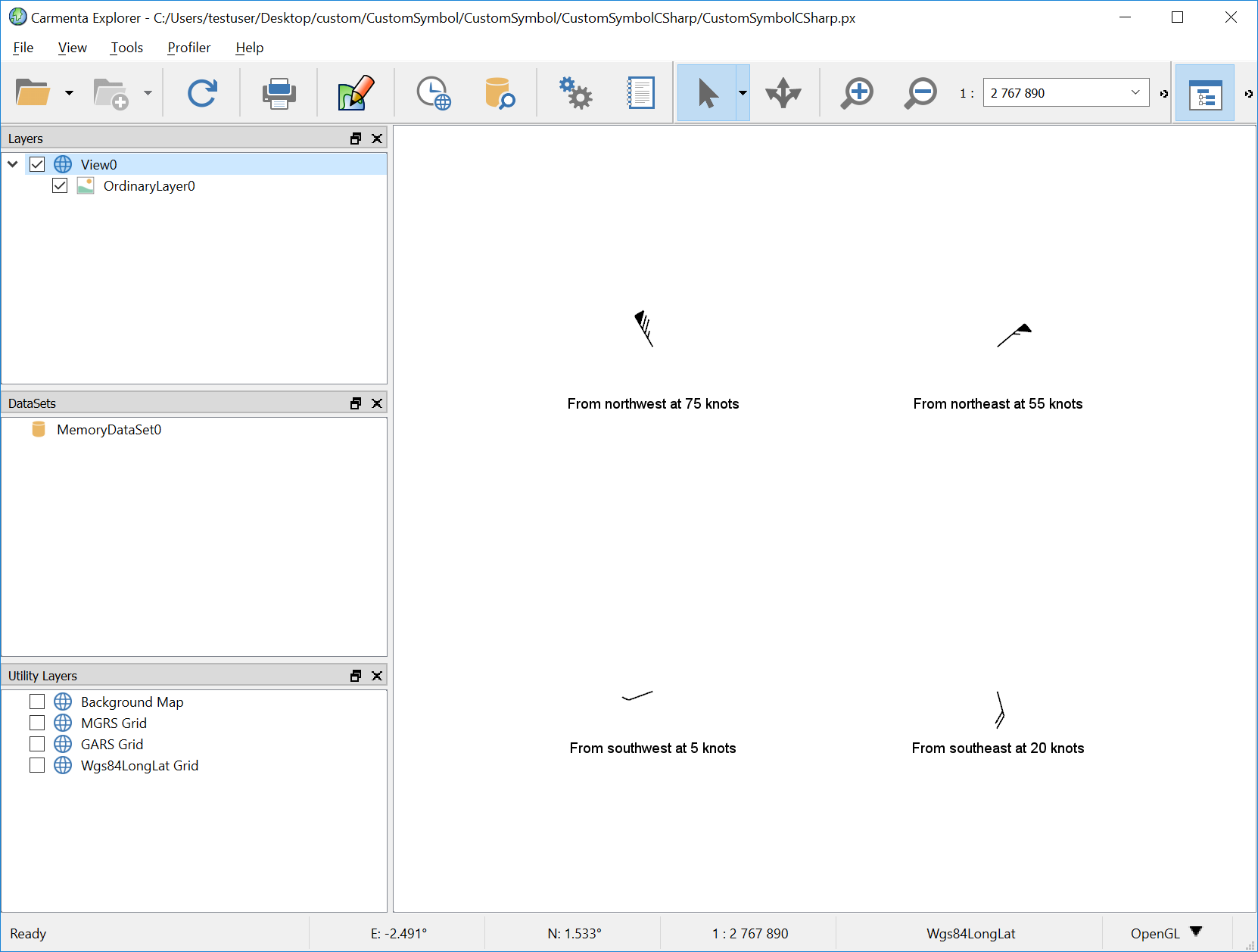 |
Custom Visualizer Sample
This sample provides two different custom visualizers. The first draws lines, for both line and polygon features, using alternating colors for each line segment and the second displays all attributes associated with a feature.
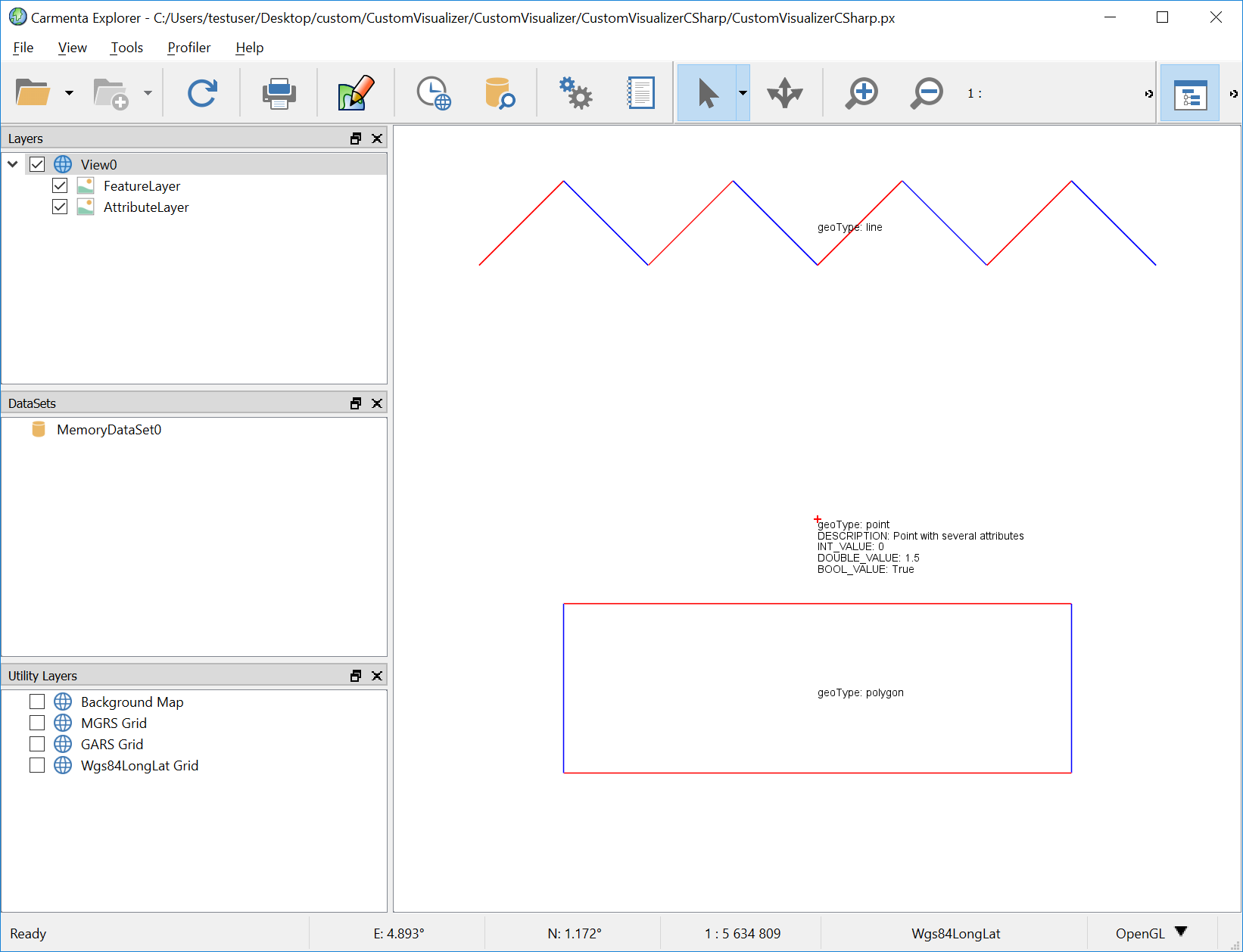 |